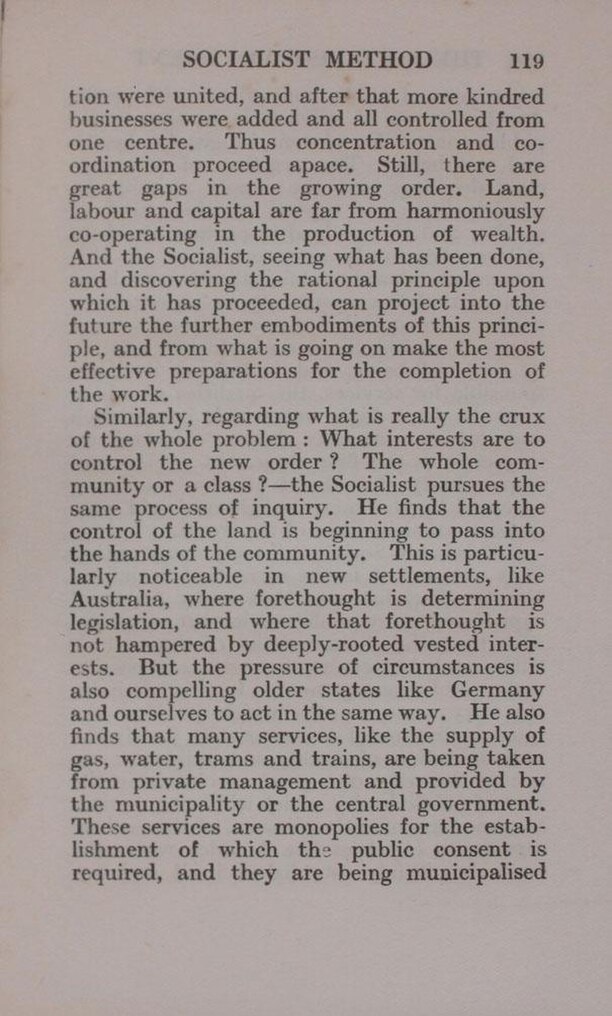tion were united, and after that more kindred businesses were added and all controlled from one centre. Thus concentration and co-ordination proceed apace. Still, there are great gaps in the growing order. Land, labour and capital are far from harmoniously co-operating in the production of wealth. And the Socialist, seeing what has been done, and discovering the rational principle upon which it has proceeded, can project into the future the further embodiments of this principle, and from what is going on make the most effective preparations for the completion of the work.
Similarly, regarding what is really the crux of the whole problem: What interests are to control the new order? The whole community or a class?—the Socialist pursues the same process of inquiry. He finds that the control of the land is beginning to pass into the hands of the community. This is particularly noticeable in new settlements, like Australia, where forethought is determining legislation, and where that forethought is not hampered by deeply-rooted vested interests. But the pressure of circumstances is also compelling older states like Germany and ourselves to act in the same way. He also finds that many services, like the supply of gas, water, trams and trains, are being taken from private management and provided by the municipality or the central government. These services are monopolies for the establishment of which the public consent is required, and they are being municipalised
